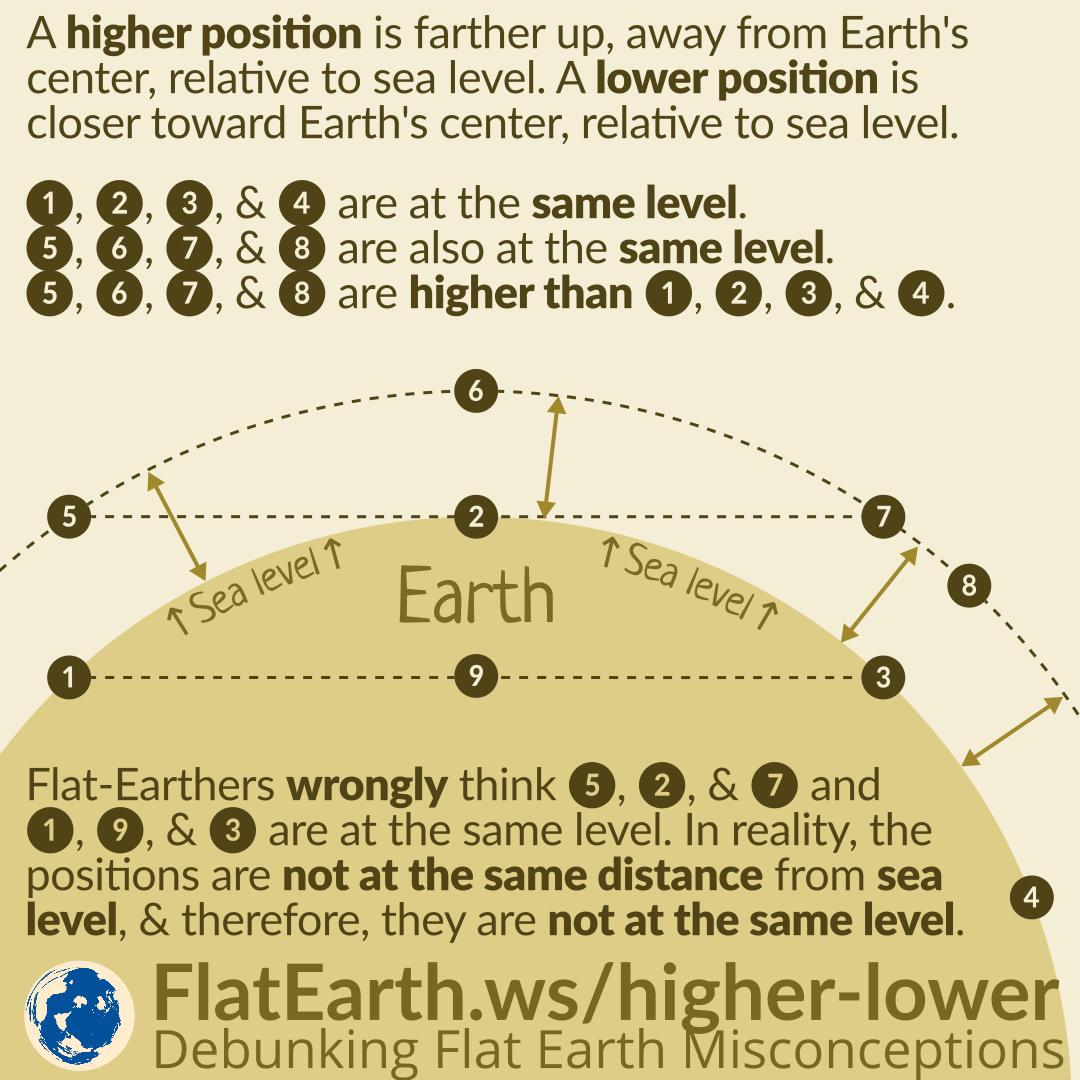‘Flat’ and ‘Level can mean approximately the same thing in everyday conversation. But in the context of science and engineering, they have different meanings. ‘Flat’ describes a planar surface. ‘Level’ means at the same height or perpendicular to the direction of Earth’s gravity.
Flat-Earthers interpret the word ‘level’ as if it always has the same meaning as ‘flat.’ However, in the scientific context, the two words have different meanings. Insisting that both words to have the same meaning is the fallacy of appeal to definition.




